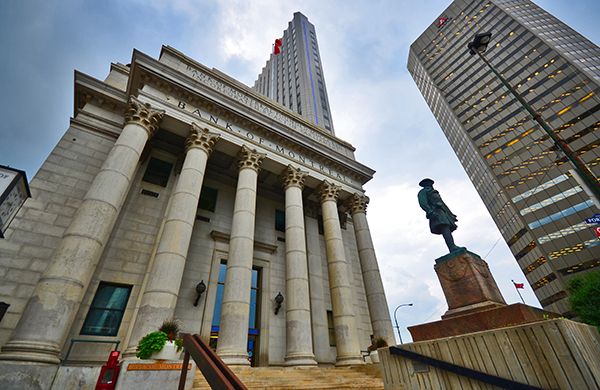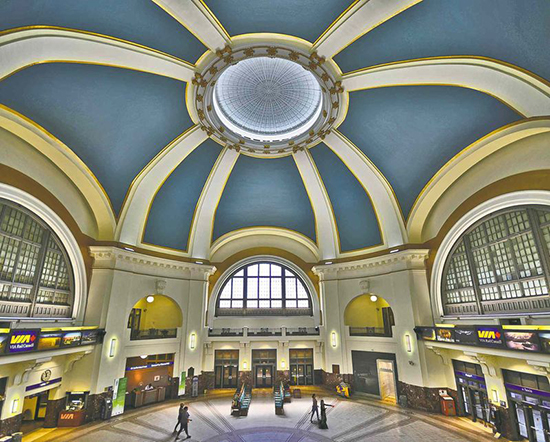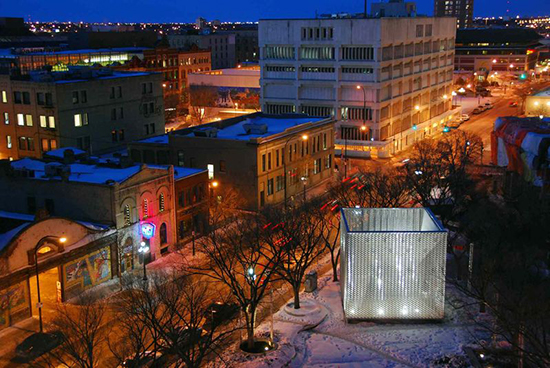Many of City's Well Known Buildings Designed by New York Architects
- Details
By Brent Bellamy, Creative Director and Architect

Referring to Winnipeg as the ‘Chicago of the North’ is like comparing the city to a famous child actor who, after his television show was cancelled, spent the rest of his life reminiscing about his time in the spotlight.
Focusing on this Chicago comparison not only discredits the diversity of what Winnipeg is today, it dilutes what the city was during the booming, turn-of-the-century rail-town days that inspired its nickname.
Grand Vision for Union Station
- Details
By Brent Bellamy, Creative Director and Architect

In 1908, the headlines of the Manitoba Free Press boldly proclaimed Winnipeg's new train depot, to be constructed at the foot of Broadway, would be "the most modern railway terminal in the world."
It described the building as magnificent in proportions and luxurious in its appointments, the finest in the Dominion. American architects Warren and Wetmore, who were simultaneously designing Grand Central Station in New York, would go on to create a building that stood as the gateway to the Canadian West, a symbol of prosperity and optimism in the young city.
More than a museum
- Details
By Brent Bellamy, Creative Director and Architect

Nearly 20 years ago, the swirling titanium panels of a new Guggenheim Museum transformed a blue-collar city named Bilbao, Spain into a flourishing centre of culture and design. This inspired cities across the globe to build ever-more sensational public buildings, hoping to recreate the elusive "Bilbao Effect."
As Winnipeg prepares to open its own iconic museum, the lesson that can be learned from the experience of these cities is translating a building like the Canadian Museum for Human Rights into a broader development catalyst, requires a focused effort to build complementary projects that expand the museum's influence beyond its walls.
Lets Make River City a Reality
- Details
By Brent Bellamy, Creative Director and Architect
 |
Winnipeg is sometimes referred to as River City. Despite owing its very existence to the conflux of two waterways and having four distinct rivers flowing through its boundaries, the reality is Winnipeg is anything but a true river city.
For more than a century, we have turned our back on the rivers. Travel down the Red or Assiniboine by boat and it is striking how rarely they are engaged by development. From the water it appears almost as though the city doesn't exist. Only downtown office towers that peak over the grand elm trees hint at its urban location. In Winnipeg, rivers are often crossed but they are rarely approached.
The lazy Prairie rivers that meander through the city appear benign at first glance, but their hidden power is revealed with water levels that rise as much as seven metres. These dramatic fluctuations have made it difficult to consistently develop the waterfront, resulting in a city that faces away from its rivers. |
Winnipeg: City of Architectural Delights
- Details
By Brent Bellamy, Creative Director and Architect

In the few decades leading up to the year 1914, Winnipeg transformed itself from an isolated trading post to a brash, cosmopolitan metropolis.
When a new train station needed to be built, the architects of New York's Grand Central were hired. When the Union Bank needed a new building at the bend in Main Street, they constructed Canada's first skyscraper, the tallest in the Dominion. Some of the finest architects in the country designed elegant banking halls, majestic terra cotta towers and grand theatre houses such as the Met, Capitol, Walker and Pantages.
Although the start of the First World War would signal the beginning of the end for this golden era of design, two events of the time would set the foundation of the city's architecture in the future. The University of Manitoba had just opened the first school of architecture west of Toronto, and the profession became organized under the regulatory umbrella of the Manitoba Association of Architects.
One hundred years removed from those formative events, the creative confidence of that pioneer era has begun to return to Winnipeg. Something special is once again happening with the city's architecture, and the world is beginning to take notice. Most people in our city don't know it, but in the international architecture community, Winnipeg has become cool.


